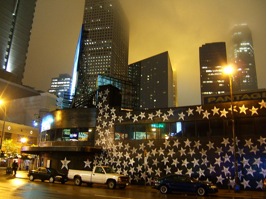Creating a Community of Music: First Avenue and the Minneapolis Scene
By Joey Dobson

First Avenue The Downtown Danceteria since 1970
A few other noteworthy elements of this transcription: first, volume at a live show is fascinating. Sometimes, as in this example, you can hardly hear some parts of the music (that would be clear in a studio recording). The lead vocals are almost indiscernible. The fact that the audience was singing along indicates that they were familiar with the music, and were already fans before they came to this show. This shows how live performances serve as a mecca of sorts for fans to experience their beloved performing artists in a more intimate, visual, and participatory manner. All of these elements illuminate important elements of First Avenue and the musical experience they create for their patrons. Community, participation, and visual spectacle all add to the music experience in a way that can only be enjoyed at a live performance.
How do we market a culture of music? How can shared musical experience be central to a business operative? When is music a commodity? These questions are central to the understanding of music both in and as culture. This study investigates how a music venue like First Avenue creates a culture of music by marketing a common space to experience musical performance. It addresses themes surrounding the creation of culture, the marketing of cultural elements, and the importance of shared spaces in experiencing music in community.
This research exists within a context of theoretical frameworks of public spaces and community, as well as philosophical arguments regarding the effects of art consumption on a community and paradigms of citizenship. Through interviews with a member of First Ave’s marketing team along with participant observation at the venue, I discovered the work that goes into the intentional music experience that First Avenue provides to its clientele.